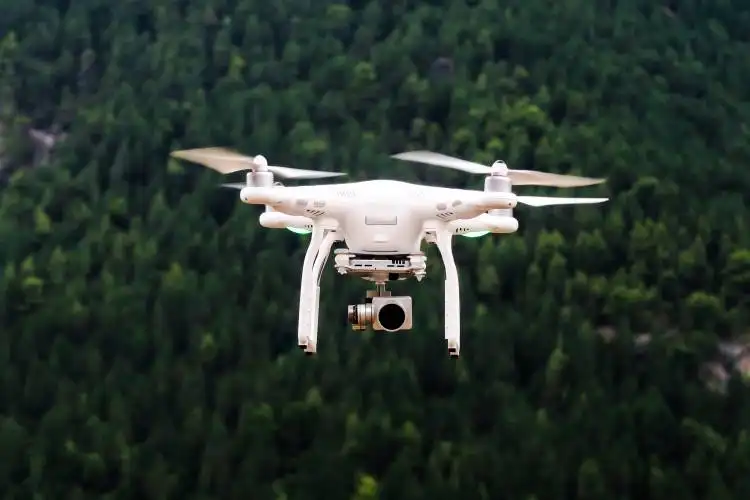Start a Commercial Photography Business
Capturing Success: Ignite Entrepreneurial Passions with a Commercial Photography Business
| Updated


COMMERCIAL PHOTOGRAPHY BUSINESS
Here's a picture-perfect business concept for you - a commercial photography business! This venture is all about capturing high-quality images for businesses to use in their marketing, advertising, and branding campaigns. Imagine capturing the perfect shot that graces a billboard or website banner, or snapping the mouth-watering images used in a restaurant's menu. A commercial photography business lets you monetize your brilliant eye for design and composition, all while helping other businesses visualise their brand essence in a snap!
Jump to Business Plan
RELATED BUSINESS IDEAS
Browse ALL Design & Creative Enterprises Business Ideas
Discover Your Perfect Domain
Unlock the door to your online success with our hand-picked selection of premium domain names. Whether you're starting a new venture or rebranding an existing one, the right domain can set the tone for your digital presence. Browse through our curated list, each with its unique potential to enhance your brand's visibility and credibility.
COMMERCIAL PHOTOGRAPHY MINI BUSINESS PLAN
This a quick reality check to help you identify the strengths and weaknesses of your business concept before you dive in.
Expected Percent Margin:
- Gross Margin: 60-70%
- Net Profit Margin: 15-30%
Earnings Expectations:
- Daily Earnings: $300 - $600
- Weekly Earnings: $1,500 - $3,000
- Monthly Earnings: $6,000 - $12,000
- Annual Earnings: $72,000 - $144,000
Actions to Hit These Numbers:
Equipment:
- Initial Investment: $10,000 - $15,000 for advanced photography and lighting equipment.
- Maintenance: Regular maintenance of the equipment to ensure optimal functionality.
Client Acquisition:
- Portfolio Building: Create a diverse portfolio showing your versatility as a photographer.
- Networking: Attend industry events to build relationships with potential clients.
Marketing:
- Website: Build a compelling website showcasing your portfolio and client testimonials.
- Social Media: Regular (bi-weekly) posts showcasing your recent work and clientele.
- SEO: Invest in SEO to increase your website's visibility on search engines.
Pricing Strategy:
- Packages: Create several pricing packages to cater to a variety of client needs.
- Individual Services: Offer individual services at premium rates.
Business Operations:
- Jobs per Month: Aim to book 4-8 jobs per month, with each job priced at $1,500 - $3,000.
- Post-Processing: Include post-processing time into your overall budget and scheduling.
Please note these are generalized estimations and can vary depending on location, economic conditions, and your individual business strategies. Always consult with a financial advisor for personalized advice.
NOT WHAT YOU HAD IN MIND? Here are more ideas



Browse ALL Design & Creative Enterprises Business Ideas
Grab Your Business Website Name
Before you get caught up in the whirlwind of setting up your business, invest in a domain name. It's a small but significant step that lays the foundation for your brand and makes it easier for customers to find and trust you. Just like you wouldn't build a house without securing the land first, don't build a business without securing your domain name.
"Why? Can't that wait?" Here's why it shouldn't
Step 1: Determine If a Commercial Photography Business Is Right for You
Examples of ways to make money
Breakdown of startup expenses
Before starting a commercial photography business, it is important to understand the startup costs associated with the endeavor. This includes the cost of equipment such as cameras, lenses, lighting, and other accessories. Additionally, you may need to purchase software for editing and storing photos, as well as a computer for processing. You may also need to factor in the cost of any necessary certifications or licenses, as well as the cost of renting a studio space.
Breakdown of ongoing expenses
After you have determined the startup costs, it is important to consider the ongoing expenses associated with running a commercial photography business. These expenses may include the cost of travel, marketing, and advertising. Additionally, you may need to factor in the cost of any necessary insurance, as well as the cost of any additional equipment you may need.
Examples of ways to make money
There are a variety of ways to make money with a commercial photography business. You can offer services such as headshots, product photography, event photography, and wedding photography. Additionally, you can offer services such as photo retouching and editing, as well as selling prints and digital downloads of your work. You can also offer classes or workshops to teach others about photography.
Step 2: Name the Business
Brainstorm potential names When brainstorming potential names for the business, it is important to consider the type of photography that will be offered. Consider the target audience and the type of message the business wants to convey. Additionally, think about the types of keywords that will be used for search engine optimization. It is also important to consider the availability of the name, as it should be unique and not already taken by another business.
Consider the domain name Once a potential name has been identified, it is important to check the availability of the domain name. This is important for the success of the business, as customers will need to be able to find the website. If the domain name is not available, it is important to consider other potential names.
Check for trademark availability Once the domain name has been secured, it is important to check for trademark availability. This is important for the protection of the business, as it will prevent other businesses from using the same name. Additionally, it is important to check for any potential copyright infringement.
Register the business name Once the name has been identified and the domain name and trademark have been secured, it is important to register the business name. This will ensure that the business is legally recognized and will provide the necessary protection for the business.
Choose a logo Finally, it is important to choose a logo for the business. This is important for the branding of the business and will help customers to recognize the business. Consider the colors, font, and design of the logo and make sure it is consistent with the message of the business.
Step 3: Create a Business Plan
Introduction: A business plan is an important document that outlines the goals and objectives of a business, as well as the strategies to achieve them. It should include a detailed description of the business, its products and services, the target market, and the competitive landscape. It should also include a financial plan that outlines the startup costs, ongoing expenses, and potential sources of income.
Market Analysis: A thorough market analysis should be conducted to understand the current market for commercial photography services. This should include an analysis of the target market, the competitive landscape, and the potential for growth. It should also include a detailed breakdown of the costs associated with providing services, such as equipment, software, and other overhead costs.
Financial Plan: A financial plan should be included in the business plan that outlines the startup costs, ongoing expenses, and potential sources of income. This should include a detailed breakdown of the costs associated with providing services, such as equipment, software, and other overhead costs. It should also include a detailed plan for generating income, such as pricing strategies, marketing plans, and potential sources of revenue.
Business Structure: The business plan should also include an outline of the business structure, such as whether it will be a sole proprietorship, partnership, or corporation. This should include details on the ownership structure, the roles and responsibilities of each owner, and the legal and tax implications of the chosen structure.
Goals and Objectives: The business plan should include a clear set of goals and objectives. These should be specific and measurable, and should be aligned with the overall mission and vision of the business. The goals and objectives should also be realistic and achievable, and should be reviewed and updated regularly.
Conclusion: A business plan is an important document that outlines the goals and objectives of a business, as well as the strategies to achieve them. It should include a detailed description of the business, its products and services, the target market, and the competitive landscape. It should also include a financial plan that outlines the startup costs, ongoing expenses, and potential sources of income. Additionally, it should include an outline of the business structure, as well as a set of goals and objectives. By creating a comprehensive business plan, entrepreneurs can ensure that their business is well-positioned for success.
Step 4: Obtain Necessary Licenses and Permits
Before you can officially open your commercial photography business, you must obtain the necessary licenses and permits. Depending on where you live, the types of licenses and permits you will need may vary. Generally, you will need a business license and a tax identification number. You may also need to obtain a permit to use public spaces or to use certain equipment. Additionally, if you plan to hire employees, you will need to register with your state’s labor department and obtain a state employer identification number.
How to apply for licenses and permits
Once you have determined which licenses and permits you need, you can begin the application process. Depending on the type of license or permit, you may need to fill out an application, provide proof of business ownership, and pay a fee. You may also need to provide proof of insurance and a copy of your business plan. Additionally, you may need to pass a background check or provide proof of experience in the field. Once you have completed all the necessary paperwork, you can submit your application and wait for approval.
Step 5: Find a Location
- Consider the type of photography you plan to do. If you plan to do studio photography, you’ll need to find a space with enough room to accommodate your equipment and clients. If you plan to do outdoor photography, you’ll need to find a location that has the right lighting and scenery.
- Consider the cost of renting or buying a space. Renting a space can be more cost-effective than buying, but you’ll need to factor in the cost of rent, utilities, and other expenses. Buying a space can be more expensive upfront, but you’ll have more control over the space and may be able to deduct some of the costs from your taxes.
- Consider the accessibility of the location. You’ll want to make sure that your clients can easily access your space. If you’re located in a busy area, you may need to factor in the cost of parking or transportation for your clients.
- Consider the amenities of the location. If you plan to offer additional services such as makeup or hair styling, you’ll need to make sure that the space has the necessary amenities. You’ll also want to make sure that the space is well-lit and has enough room for you to move around and set up your equipment.
Tips on setting up the space
- Invest in the right equipment. You’ll need to invest in the right equipment to ensure that you can provide the best quality photos. This includes cameras, lenses, lighting, backdrops, and other accessories.
- Invest in the right furniture. You’ll need to invest in comfortable furniture for your clients. This includes chairs, couches, and other seating options. You’ll also need to invest in tables and other surfaces to place your equipment.
- Invest in the right decorations. You’ll want to make sure that your space is inviting and comfortable for your clients. This includes investing in decorations such as artwork, plants, and other items that will make the space feel more welcoming.
- Invest in the right technology. You’ll need to invest in the right technology to ensure that you can provide the best quality photos. This includes computers, printers, and other equipment that will help you edit and print your photos.
Step 6: Purchase Necessary Equipment
When starting a commercial photography business, there are certain pieces of equipment that are essential for success. This includes a digital camera, lenses, lighting equipment, a tripod, and a computer. Depending on the type of photography you plan to do, you may need additional equipment such as props, backdrops, and editing software. It is important to research the best equipment for your needs and budget before making any purchases.
Cost of equipment
The cost of equipment can vary greatly depending on the type and quality of the items you purchase. Digital cameras can range from a few hundred dollars to several thousand dollars. Lenses can range from a few hundred dollars to several thousand dollars. Lighting equipment can range from a few hundred dollars to several thousand dollars. Tripods can range from a few hundred dollars to several thousand dollars. Finally, computers can range from a few hundred dollars to several thousand dollars.
Where to purchase equipment
When purchasing equipment for your commercial photography business, it is important to shop around for the best deals. You can purchase equipment from online retailers, local camera stores, and even second-hand stores. It is important to compare prices and read reviews before making any purchases.
Financing options
If you are unable to purchase the necessary equipment upfront, there are financing options available. You can apply for a loan from a bank or credit union, or you can look into leasing options. It is important to compare rates and read the fine print before signing any agreements.
Step 7: Develop a Pricing Structure
When it comes to pricing your services, there are a few different models you can use. The most common are charging an hourly rate, charging a flat fee for a project, or charging a per-image fee. It’s important to do your research and determine which pricing model is best for your business. You should also consider the amount of time and effort you’ll need to put into a project, as well as the cost of your equipment and other overhead costs.
Decide on a pricing strategy
Once you’ve determined which pricing model is best for your business, you’ll need to decide on a pricing strategy. This will depend on the type of photography you’re offering and the market you’re in. You may want to start off with lower prices to attract more customers, or you may want to charge higher prices to reflect the quality of your work. It’s important to be aware of the competition in your market and make sure your prices are competitive.
Set up a payment system
Once you’ve determined your pricing strategy, you’ll need to set up a payment system. You may want to accept payments online via credit card or PayPal, or you may want to accept cash or checks. You’ll also need to decide if you’ll require a deposit or full payment upfront. It’s important to make sure your payment system is secure and that your customers feel comfortable paying you.
Create a contract
Finally, you’ll need to create a contract that outlines the terms of your services. This should include the scope of the project, the payment terms, and any other details that are relevant to the project. It’s important to make sure the contract is clear and concise so that both parties understand the terms of the agreement. This will help protect both you and your client in the event of a dispute.
Step 8: Market Your Business
Social media When it comes to marketing your business, social media is one of the most powerful tools you have at your disposal. By creating accounts on various social media platforms, you can reach a wide audience and show off your work. You can also use these platforms to interact with potential clients and build relationships. Additionally, you can use social media to advertise special offers, discounts, and other promotions.
Networking Networking is another great way to market your business. Attend local events and workshops related to photography and make connections with other photographers and potential clients. You can also join photography groups and forums online to connect with other professionals in the industry.
Website Having a website for your business is essential for any commercial photographer. Your website should include a portfolio of your work, contact information, and pricing information. Additionally, you can use your website to blog about topics related to photography and post helpful tips and tutorials.
Print materials Print materials such as business cards, flyers, and brochures are also great for marketing your business. You can distribute these materials at local events or send them to potential clients. Additionally, you can use these materials to promote special offers and discounts.
Word of mouth Word of mouth is one of the most effective ways to market your business. Ask your friends and family to spread the word about your business and encourage your clients to leave reviews and testimonials. You can also offer incentives such as discounts or free prints for referrals.
Step 9: Make Money
- One of the most common ways to make money as a commercial photographer is to charge for services. This includes charging for the time spent shooting, editing, and delivering the photos. Additionally, photographers can charge for prints, digital downloads, and other products.
- Another way to make money is to license photos to businesses or individuals. This means that the photographer retains the copyright to the photo, but the client pays for the right to use the photo for a specific purpose.
- Photographers can also make money by selling stock photos. This involves taking photos that can be used by a variety of clients for a variety of purposes. The photographer will then upload the photos to a stock photo website and earn a commission when the photo is purchased.
- Finally, photographers can also make money by teaching photography classes or workshops. This is a great way to share knowledge and experience with others while also earning an income.
EXPLORE MORE CATEGORIES
Browse ALL Business Idea Categories
TAKE THE NEXT STEPS










